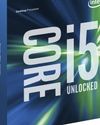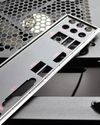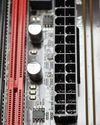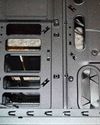The Complete Build Your Own PC Manual - July 2020

The Complete Build Your Own PC Manual - July 2020

Få ubegrenset med Magzter GOLD
Les The Complete Build Your Own PC Manual og 9,000+ andre magasiner og aviser med bare ett abonnement Se katalog
1 Måned $9.99
1 År$99.99 $49.99
$4/måned
Abonner kun på The Complete Build Your Own PC Manual
Kjøp denne utgaven $3.99

I denne utgaven
Your essential step-by-step guide to building your own computer from planning to completion. Building your own PC is not something everyone will want or need to do. It takes some time, planning and careful thought and is not always the best possible way to get a new computer within your budget. However, if you want to feel a great sense of satisfaction, save money, learn more about how computers work and set yourself up to be able to solve hardware problems in the future, we recommend it to anyone. If you need to either get your first PC or replace an old one, this guide, aimed at the first time builder, takes you through every step: from planning the system to installing components and adding essential software.
Motherboards
It might seem that your choice of motherboard is fairly straightforward; Intel or AMD compatible, depending on the CPU you are going to use. However, if you want to get the best out of your new PC, you really need to choose a motherboard based on your main usage aims. A gaming motherboard will offer very different features to one designed for general use or office work. Over the next few pages we will look at the many different motherboard options available to you.
6 mins
Choosing a Processor
The CPU (Central Processing Unit) of your computer is likely to be the most expensive single component, especially if you are trying to future-proof your build as much as possible. When it comes to choosing a processor, faster and newer is almost always better. However, does the average PC builder really need a 4GHz Core i7? Does having a faster CPU always mean having a faster computer overall? What is hyper-threading? Read on to find the answers to these questions and many more.

6 mins
HDD, SSD or Both?
The storage capacity of your PC will be dictated by what you will be doing with it but even if you don’t think you will need much storage, the cost of storage has come down so much in recent years that it makes sense to choose more than you might need right now. The bigger question with storage these days is whether to go for a HDD, an SSD or perhaps both. Let’s take a look at the pros and cons of all these component choices.
4 mins
Choosing a Graphics Card (GPU)
If you are building a PC to be able to play games, the graphics card or Graphical Processing Unit (GPU) will probably be one of the most expensive components after the CPU. GPUs seem to be improved and updated at a faster pace than almost any other item you will fit into your computer and keeping up with the latest cutting edge tech can be very expensive. For our build we have chosen a card which offers a good mix of features and at a reasonable price.
6 mins
Fitting the Motherboard into the Case
If you have been following the steps of the build so far, you should now be in a position to fit the motherboard, along with the fitted CPU, cooler and RAM, into your prepared case. This not only involves screwing the board into place but also correctly connecting all the case controls like the power switch, HDD LED, front USB ports etc.. Your motherboard will also have been supplied with a back plate.

4 mins
Adding the Power Supply Unit
When you think about the important components of a PC build, it is fairly easy to overlook the Power Supply unit or PSU. However, if you do not match the PSU correctly with your other components, especially the graphics card, you may see a whole range of problems occur when you finally get the PC up and running. From simply not having the power to turn on, to intermittent crashes when gaming and random hardware faults, a weak or poor quality PSU is trouble.

2 mins
Power Connections
Finally, you can now begin to connect the whole system up to the power supply and take an important step towards the first boot. If you followed our advice earlier in the guide for planning your build, you shouldn’t have any surprises when it comes time to connect everything up. If you do find that cables are too short, or missing completely, you can buy extensions and adaptors online easily.

2 mins
Cable Management
Although it may seem that taking time to tidy internal cables out of sight is simply down to personal preference, and how pretty you want your PC to look through that windowed side panel, but good cable management is increasingly seen as important for the welfare of your PC. Good airflow from the case fans is essential for keeping temperatures down and as thin as they may be, cables strewn all through the case will disrupt it.

3 mins
The Complete Build Your Own PC Manual Magazine Description:
Utgiver: Papercut Ltd
Kategori: Computer & Mobile
Språk: English
Frekvens: Half-yearly
Save money by building your own PC! Whether you have never seen the inside of a computer or you have some basic knowledge, this guide is the perfect way to increase your understanding and bolster your confidence in PC building. Helpfully broken up into three sections: Planning, Building and Software, this book is all you need to build a brilliant first PC.
 Kanseller når som helst [ Ingen binding ]
Kanseller når som helst [ Ingen binding ] Kun digitalt
Kun digitalt